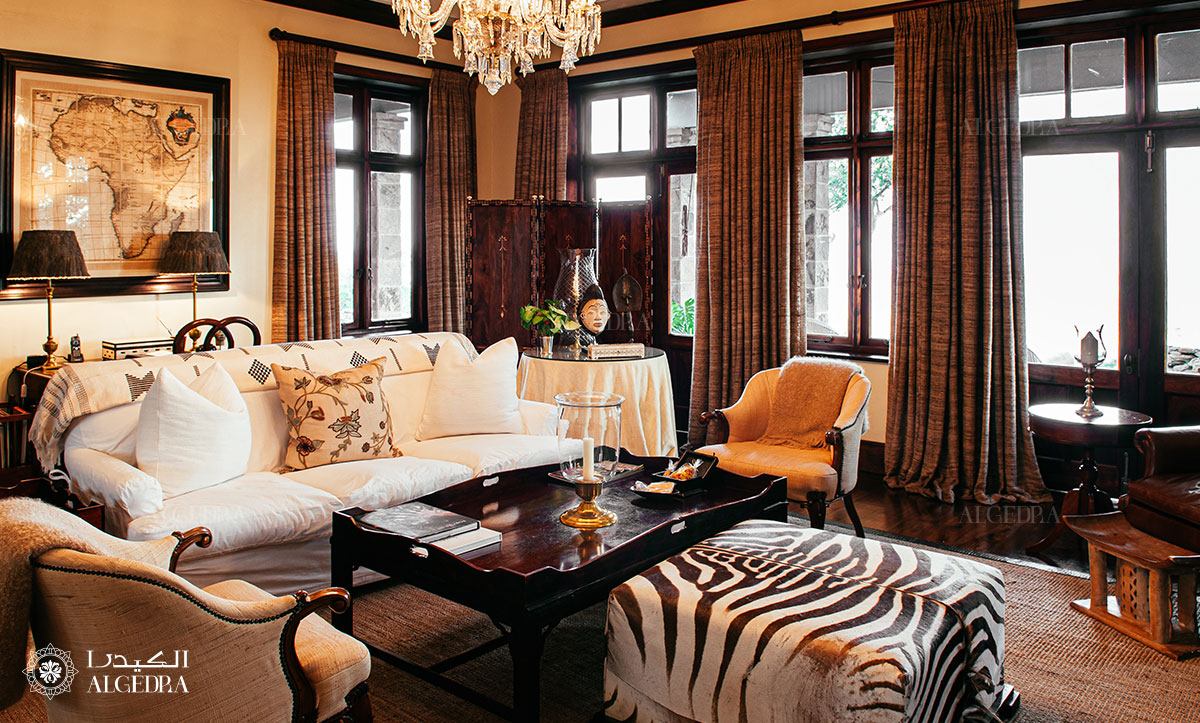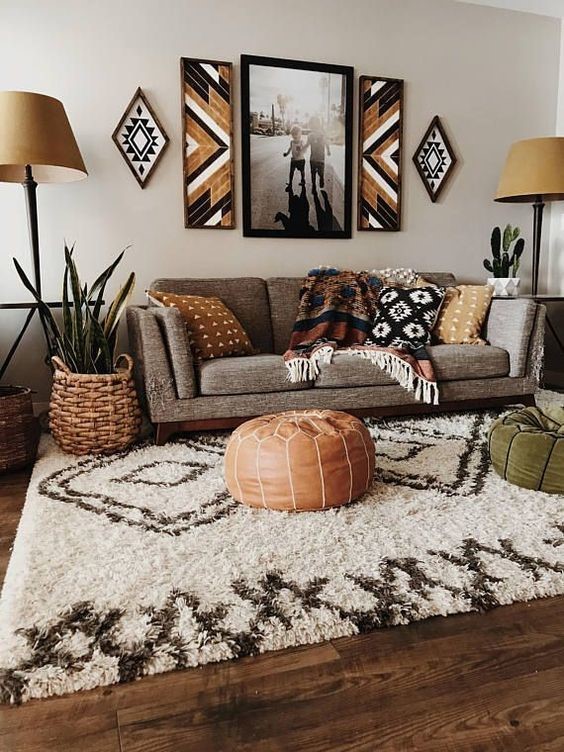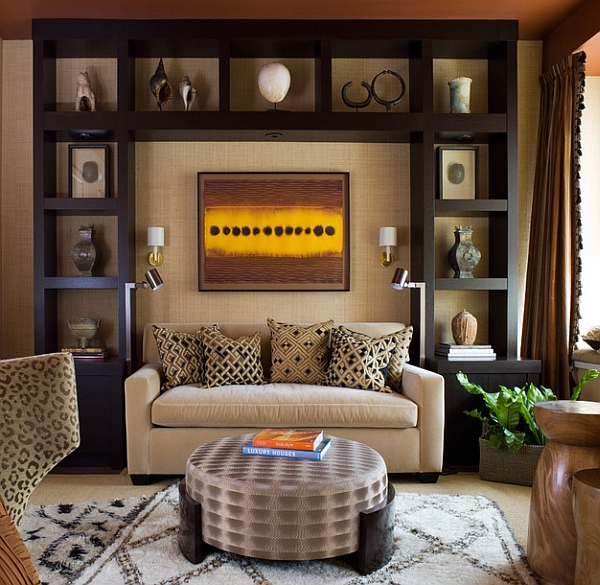Introduction to African Inspired Interior Decorating
As someone who has traveled across various parts of Africa, I have always been captivated by the rich diversity of cultures, colors, and textures that define African interior decor. Infusing your home with African-inspired elements not only adds charm and character but also tells a story of heritage and tradition. In this guide, we will explore the essence of African inspired interior decorating, rooted in personal experience, showcasing impactful styles, decor tips, and cultural significance.
The Essence of African Inspired Decor
African inspired interior decorating is all about celebrating the continent’s vibrant cultures, natural landscapes, and artistic expressions. From bold colors to intricate patterns, African decor brings warmth and energy into a space.
Key Characteristics of African Decor
- Bold Colors: Rich earth tones, vibrant reds, yellows, and greens.
- Natural Materials: Use of wood, stone, and textiles.
- Patterns and Textures: Tribal patterns and woven textures.
- Cultural Artifacts: Incorporation of masks, sculptures, and traditional crafts.
Choosing the Right Color Palette
The right color palette is crucial in achieving an authentic African-inspired interior. From my experience, the following palettes work beautifully:
Popular Color Schemes
| Color Scheme | Description | Ideal Uses |
|---|---|---|
| Earth Tones | Warm browns, tans, and ochres reflecting the African landscape. | Living rooms and bedrooms for a cozy feel. |
| Vibrant Accents | Bold hues like red, orange, and yellow that pop against neutral backgrounds. | Accent walls or decor pieces. |
| Cool Blues and Greens | Reflective of Africa’s rivers and forests. | Bathrooms and kitchens for a refreshing atmosphere. |

Textiles: Adding Layers and Depth
Textiles play a vital role in African interior design, adding layers, depth, and comfort to spaces. From colorful throws to intricately patterned cushions, these elements enhance the overall aesthetic.
Types of African Textiles
- Kente Cloth: A vibrant, geometric patterned fabric from Ghana.
- Batik: A wax-resist dyeing technique that produces stunning designs.
- Shweshwe: A printed cotton fabric from South Africa, known for its intricate patterns.

How to Incorporate Textiles
Layering textiles is a great way to introduce warmth and texture. I recommend:
- Using shweshwe cushions on a neutral sofa.
- Hanging a Kente cloth tapestry as a focal point.
- Placing batik table runners or throws on furniture.
Cultural Artifacts: Telling a Story
Every piece you select can tell a story about the culture and heritage it represents. African artifacts are not just decor; they are pieces of history and artistry.

Essential Cultural Pieces
Incorporate the following artifacts to create an authentic African vibe:
- Masks: Traditional masks can serve as wall art.
- Wooden Sculptures: Beautifully carved figures add elegance.
- Pottery: Handmade pots and bowls create rustic charm.
Creating a Display
A well-arranged display of artifacts can become a conversation starter. Here’s how I advise displaying them:
- Use floating shelves for masks and small sculptures.
- Arrange pottery pieces in a grouping on a console table.
- Create a gallery wall featuring various artifacts.

Furniture: The Heart of Comfort
Selecting the right furniture is essential for functionality without compromising style. African-inspired furniture often incorporates natural materials and artisanal craftsmanship.
Types of African Furniture
- Wooden Carvings: Handcrafted pieces from solid woods like mahogany and teak.
- Woven Furniture: Rattan and wicker chairs add a relaxed feel.
- Rustic Tables: Tables made from reclaimed wood or with a natural finish.

Combining Furniture Styles
Mixing modern functionality with traditional craftsmanship creates a balanced look:
- Pair a contemporary sofa with a rustic coffee table.
- Incorporate woven chairs to soften a stark dining area.
- Use colorful poufs for casual seating that nods to traditional African style.
Lighting: Setting the Mood
Lighting is pivotal in creating an inviting atmosphere. African-inspired lighting often combines natural materials and artistic designs.

Types of Lighting Fixtures
- Lanterns: Metal or woven lanterns create a warm glow.
- Statement Pendants: Large, eye-catching fixtures can serve as focal points.
- Natural Light: Incorporate large windows and mirrors to maximize daylight.
Creating a Lighting Plan
Here’s how to effectively light an African-inspired space:
- Layer lighting with ambient, task, and accent lights.
- Use dimmers to control brightness and mood.
- Highlight artwork or artifacts with focused lighting.

Plants and Natural Elements
Add vitality to your space with plants that reflect the African landscape. Natural elements bring freshness and can soften even the most structured spaces.
Best Plants for African Inspired Decor
- Fiddle Leaf Fig: A stylish, large-leaved plant ideal for corners.
- Snake Plant: Low maintenance and an excellent air purifier.
- Pothos: A versatile trailing plant that can enhance shelves or hangings.
Incorporating Natural Elements
Bringing in natural elements creates a cohesive look:
- Use woven baskets for plant pots.
- Incorporate wooden planters to echo furniture styles.
- Display plants at varying heights for visual interest.
Pros and Cons of African Inspired Interior Decorating
| Pros | Cons |
|---|---|
| Rich cultural storytelling | Can become overwhelming if not balanced |
| Vibrant, inviting atmosphere | Authentic pieces can be expensive |
| Versatile design options | Finding high-quality materials may require research |
Conclusion: Your African Inspired Sanctuary
African inspired interior decorating allows you to create a sanctuary that feels as vibrant and rich as the continent itself. By thoughtfully incorporating colors, textiles, cultural artifacts, and natural elements, you can design a space that embodies warmth, comfort, and cultural appreciation. Remember, each piece you choose tells a part of your story and the stories of those who influenced its journey.
Frequently Asked Questions (FAQ)
What are the key elements of African inspired decor?
The key elements include bold colors, natural materials, unique patterns, and cultural artifacts that reflect Africa’s diverse heritage.
How can I start incorporating African elements into my home?
Begin with small accents like textiles or wall art, and gradually introduce larger furniture pieces and color schemes that reflect the culture.
Are there specific furniture styles associated with African decor?
Yes, furniture often includes carved wooden pieces, woven elements, and rustic finishes that express a connection to nature and traditional craftsmanship.
How do I balance African decor with modern design?
Start with a neutral base and add African elements as accent pieces. Mix traditional items with contemporary furniture for a harmonious look.